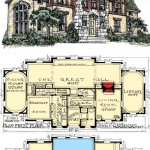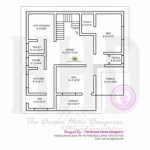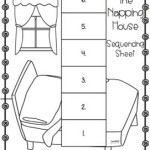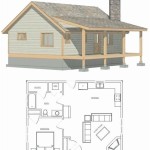Plan Drawing Of A House: Essential Aspects
A plan drawing, often referred to as a floor plan, is a critical representation of the layout of a house. It serves as a roadmap for the construction process, providing a detailed view of the building's design and organization. Creating an accurate and comprehensive plan drawing is essential for ensuring a successful and efficient construction project.
The process of drawing a house plan involves meticulously measuring, sketching, and documenting the intended layout. Here are some essential aspects to consider when creating a plan drawing:
1. Scale and Measurement:
The plan drawing should be drawn to scale, indicating the precise dimensions of the house. Accurate measurements are vital for ensuring that the built structure corresponds exactly to the design specifications.
2. Room Layout:
The plan drawing clearly depicts the arrangement and size of each room within the house. It shows the location of windows, doors, and staircases, providing a clear understanding of the flow and functionality of the space.
3. Structural Elements:
The plan drawing includes information on the structural elements of the house, such as walls, columns, and beams. This information is essential for ensuring the stability and safety of the building.
4. Utility Systems:
The plan drawing indicates the placement of utility systems, including plumbing, electrical, and HVAC (heating, ventilation, and air conditioning). This information facilitates the efficient installation and maintenance of these systems.
5. Furniture Placement:
In some cases, plan drawings may also include suggestions for furniture placement. This helps visualize the potential layout and functionality of each room within the house.
6. Site Plan:
A site plan or plot plan is included in the plan drawing, showing the house's overall placement on the land. It indicates the location of the driveway, walkways, and any other external features.
7. Legend and Notes:
A legend or key is provided to explain the symbols and abbreviations used in the plan drawing. Additionally, notes may be included to clarify specific details or design considerations.
Conclusion:
A well-executed plan drawing is the cornerstone of a successful home construction project. It provides a clear and accurate representation of the house's design and layout, ensuring that all parties involved have a shared understanding of the project. By paying close attention to the essential aspects outlined above, architects, engineers, and builders can create plan drawings that facilitate efficient, cost-effective, and aesthetically pleasing construction.

Floor Plan Creator And Designer Free Easy App

Floor Plan House Sketch Stock Vector Ilration Of Building 52483697 Plans

Floor Plans Types Symbols Examples

Example Of House Plan Drawing Scientific Diagram

Easy Home Building Floor Plan Cad Pro

Where You Can Buy House Plans Live Home 3d

House Plan Drawing Everything You Need To Know

Home Floor Plans House Plan Drawings

Floor Plan Wikipedia

How To Draw A Floor Plan By Hand Step Guide








